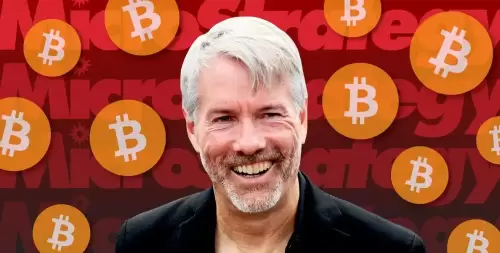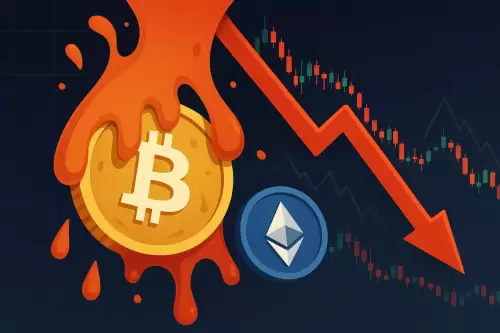 |
|
 |
|
 |
|
 |
|
 |
|
 |
|
 |
|
 |
|
 |
|
 |
|
 |
|
 |
|
 |
|
 |
|
 |
|
Cryptocurrency News Articles
Tezos (XTZ) Co-founder Arthur Breitman Explains Why He's Tokenizing Uranium
May 18, 2025 at 09:06 pm
Welcome to Slate Sundays, CryptoSlate's new weekly feature showcasing in-depth interviews, expert analysis, and thought-provoking op-eds
The last time I interviewed Tezos co-founder Arthur Breitman was at the Paris Blockchain Week Summit in 2019. It coincided with the fire of Notre Dame, and I can still hear the gasps of a dumbstruck crowd gathered opposite the cathedral as the angry orange flames engulfed the spire of “Our Lady of Paris,” and the thick black smoke billowed into the evening sky.
Despite the historic tragedy at the medieval cathedral, the energy at the conference was high. It was still early days when most ideas outpaced the technology, and there was a gulf between engineering and marketing.
DeFi wasn’t a thing yet. Decentralized exchanges were scoffed at for their lack of speed and wafer-thin liquidity, and IDEX dominated the charts with a monthly volume of 400K ETH, trading for the knockdown price of $150 a coin.
Privacy coins hadn’t been persecuted. You could on and off-ramp crypto without KYC, and John McAfee was still on a boat in the Bahamas, defiantly evading the IRS.
Most projects were replications of web2 apps attached to a blockchain that could have functioned perfectly well without it.
You get the idea: a flashy website, a fancy whitepaper, and an opportunistic leader who would likely end up in a battle with the SEC.
Even in the depths of the bear, these events still drew a decent-sized crowd, discussing blockchain scalability, the path to mass adoption, winning the hearts and minds of traditional financial institutions, and when to expect a clear regulatory framework for crypto… Some things never change. Others feel like a lifetime ago.
The event was opened by Bruno Le Maire, the French Minister for the Economy, keen to sing the virtues of the country’s newly released PACTE law for digital assets, and emphasize the seriousness of France’s blockchain bet. In a bizarrely stark contrast, it was MCed by Bad Crypto, a crass American podcast duo whose frat boy humor and misplaced jokes about the French went down as well as you might imagine.
Six years ago, crypto was the frontier, and anything was possible. At a time when the battle of the Layer 1s was intensifying, Tezos, the self-amending blockchain launched in response to Bitcoin’s lack of innovation and programmability, was a contender as an “Ethereum killer.”
Fast-forward to 2025, and Tezos has a new aspiration: conquering the RWA sector by tokenizing uranium. And Notre Dame has a new spire.
Tezos, the blockchain designed to evolve
As the “blockchain designed to evolve,” Tezos has moved with the narratives, from money to DeFi, NFTs to memes, and RWAs. It has avoided the dumpster fire of fallen cryptos thanks to its “adaptability,” “resilience as a value,” and “prudent management” of its significant treasury (Tezos raised $232 million in Bitcoin in 2017).
Exchanging greetings today, Arthur Breitman is candid and relaxed. He’s lost some of the bravado of 2019 and speaks with the humility of a man who’s weathered crypto’s turbulent cycles. I remind him that we’ve met before, and even though I doubt he remembers, he nods kindly and smiles as I recall his ambitions for Tezos to be the most widely used blockchain and his predictions of a consolidation of the space.
“I had a few theses that were wrong,” he says. “One thesis was that at some point, people were going to be tired of buying new coins, because they keep diluting everything, and you would not be able to make money easily by just launching a new coin… This was clearly wrong!”
He chuckles ruefully as his eyes travel to the exhibition hall below with its loud booths and colorful merch.
“There’s still very much a playbook where you raise a bunch of money for VCs. You launch a coin. You own 90% of the tokens, and you flood the market with them.”
At a time when pump.fun spews out tokens by the second, Fartcoin ranks higher than Tezos by market cap, and the President of the United States has his own meme coin; does Arthur still have the same passion and drive for what he does? He sighs:
“I’ve been disappointed with how the rest of the ecosystem has moved on—not the Tezos ecosystem, which is brilliant—but there’s a lot of nihilism that took over in crypto, and I don’t like the nihilism. I came in for the technology, for the ideology, for the political aspect of it… If you look today, that’s been drowned out.”
Arthur and his wife Kathleen launched Tezos in the first place to be a breeding ground for innovation and a place to try experiments not possible on Bitcoin, with a self-amending blockchain that removed the need for contentious forks and prioritized
Disclaimer:info@kdj.com
The information provided is not trading advice. kdj.com does not assume any responsibility for any investments made based on the information provided in this article. Cryptocurrencies are highly volatile and it is highly recommended that you invest with caution after thorough research!
If you believe that the content used on this website infringes your copyright, please contact us immediately (info@kdj.com) and we will delete it promptly.






























































